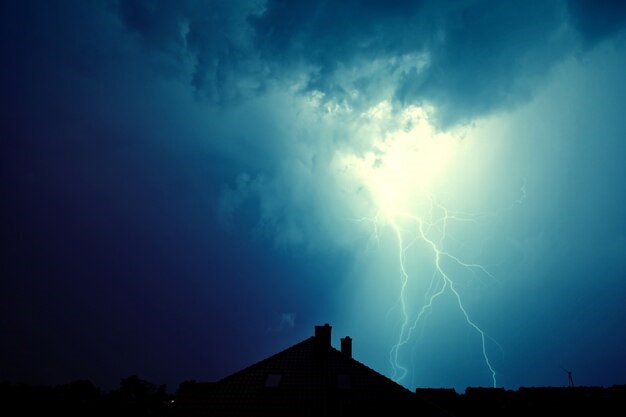How to protect electronic equipment from thunderstorms: A guide
19. September 2023 Published by Raphael DoerrElectronics and thunderstorms do not go together. The destructive power of lightning can easily overwhelm the sensitive circuits of our electronics with voltages of up to 100,000 volts. So what do we do when the thunderstorm approaches and our phones and other electronics are in the field of fire? Don’t panic, we have some simple but effective tips to protect your tech treasures from the vagaries of the weather.
Lightning protection for electronics is not rocket science
Safety from thunderstorms is not magic, but can be achieved with three simple steps. All Gigaset DECT phones are of course equipped with surge protection, but nature has proven often enough that this is sometimes not enough. Therefore, when the clouds thunder and lightning flashes, you should follow the advice below:
First, disconnect your DECT telephones from the mains by pulling the plug. The same applies to charging cradles of second and third devices as well as to your DECT repeaters.
Secondly, protect your other appliances by unplugging them too. A precaution is always better than hindsight!
Thirdly, for extra protection, unplug all electrical appliances and multiple sockets. Simply switching off the appliance is similar to an umbrella in a storm – it does not provide complete protection.
Internet and telephone during the thunderstorm
Now you’re probably asking yourself, “All right, but if my DECT phone is disconnected from the power, what happens to my calls?” Don’t worry. Your DECT phone has battery power for several hours, so it can survive even the strongest thunderstorm. Alternatively, you could also divert calls from your DECT phone to your (Gigaset) smartphone.
After the storm
As soon as the thunderstorm is over, you can breathe again. Reconnect your landline phones and other devices to the internet and the power grid and deactivate call forwarding if necessary. As if nothing happened!
Insurance cover for lightning strikes
Finally, an important note: A technical device damaged by a lightning strike is like burnt toast – virtually unsalvageable. But many household insurance policies offer coverage for damage caused by overvoltage. It is therefore advisable to check your insurance policy for such damage. It is always better to be prepared and avoid the risk than to regret it later. So always keep an eye on the sky and make sure your electronics are safe!
In summary, although thunderstorms pose a threat to our electronics, there are simple and effective ways to avoid damage. When the next thunderstorm threatens, remember our advice and act accordingly.
 Comments
Comments

 en
en 








